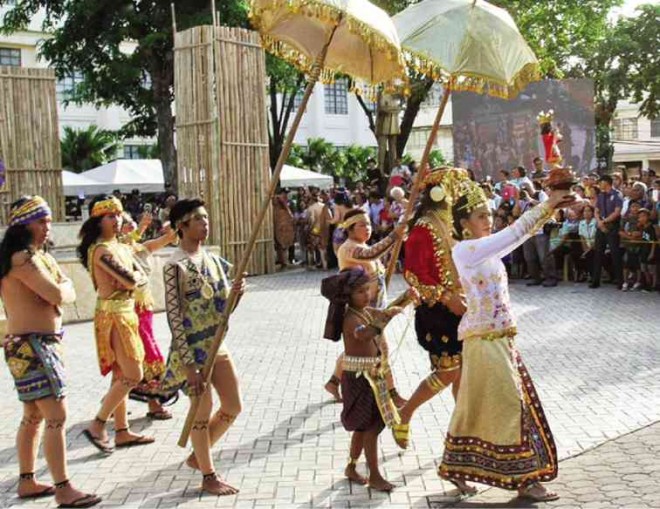
Hundreds of devotees gathered in Cebu City last week to witness the celebration of the 450th anniversary of Kaplag—the finding or discovery of the image of the Santo Niño in Cebu in 1565.
Highlighting the event, which also marked the 450th anniversary of the Augustinian missionaries in the country and the 50th anniversary of the elevation of the Santo Niño Church as a minor basilica by papal edict, was the grand reenactment of the discovery of the image inside a native box in an unburned hut by Miguel López de Legazpi and his men after they attacked and burned Cebu.
“The Spaniards, headed by Miguel López de Legazpi, interpreted the event as a divine sign,” notes Augustinian Fr. Arnel Antonio Dizon in the Kaplag 2015 Commemorative book published by the Augustinian Province of Santo Niño de Cebu-Philippines.
“In exchange, they decided, first to build a chapel on the very spot where the image was found, and second, they deemed it proper to celebrate annually the said discovery,” he adds.
The image of the Holy Child is said to be the same image given by the Spaniards to Rajah Humabon’s partner Juana when they first set foot in the island in 1521.
The discovery is also said to be the start of the devotion of the Cebuanos or Filipinos in general to the image of the Child Jesus.
Remind, educate
Fr. Harold Rentoria, OSA, executive director of the organizing committee for the 2015 Kaplag celebrations, said the reenactment was “meant to educate the people and remind them of the finding of the image of Santo Niño, how it arrived her in the Philippines.”
It also aimed to “educate the young people about the development of the Sinulog that we have now.”
Rentoria, who is also the head of the National Commission for Culture and the Arts’ (NCCA) Subcommission on Cultural Heritage, said the event also affirmed the beginning of the systematic evangelization of the Philippines, which started in 1565 upon the arrival of Augustinian priests headed by Fr. Andres de Urdaneta.
However, he stressed that “Kaplag was not only about the Augustinians, not only about the devotion to the Santo Niño but likewise about the Filipino people who received the gift of faith through our forefathers.”
Celebration
Rentoria added Kaplag was a celebration, a reminder of the “gift of faith” received by Filipinos.
He added there was a need to “to nurture [the faith] and pass it to the future generations.”
Rentoria added that he was satisfied with the reenactment which he described as an attempt to marry history and artistry.
The reenactment, directed by top writer and stage-television director Floy Quintos, started at Fort San Pedro, then proceeded to Magellan’s Cross and ended at the Pilgrim Center, where Manila Archbishop Luis Antonio Cardinal Tagle later officiated the final novena Mass on the eve of the fiesta.
The following day, April 28, Cebu Archbishop José Palma officiated the Pontifical Mass marking the fiesta proper. It was followed by Sinulog performances and a fireworks display.
Speaking to the media after the Mass, Monsignor Palma said the fiesta not impressed devotees and guests, but inspired and blessed them as well.
“Considering the importance of Kaplag, I think more and more will appreciate the feast of the Señor Santo Niño,” he said.
When asked about why there was less support to the event compared to the annual Sinulog fiesta, the prelate said it was because “Kaplag has only been [really commemorated] in the last few years.”
“Kaplag in terms of language is rather new that’s why it is not as magnificently and grandiosely participated by many,” he said.
“But I feel in the end, we would recognize that [both celebrations celebrate] is just one Señor Santo Niño.”